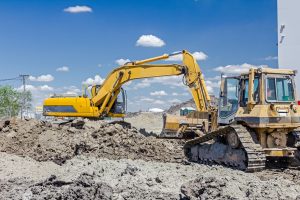Court denies all industry challenges and asks OSHA to reconsider silica Medical Removal Protections
On Dec. 22, the U.S. Court of Appeals for the District of Columbia Circuit announced that it would reject all industry challenges to OSHA’s new rule on respirable crystalline silica exposure.
The rule reduces the permissible exposure limit (PEL) to an average of 50 micrograms per cubic meter of air during an 8-hour shift for the construction industry.
Industry groups argued that there were unnecessary provisions in the rule that would not help to protect workers, yet would expend their resources. The court reviewed the following five issues:
- Whether there is “substantial evidence” that reducing the PEL will significantly decrease health issues related to silica exposure
- Whether the rule is technologically feasible for the foundry, hydraulic fracturing and construction industries
- Whether the rule is economically feasible for the foundry, hydraulic fracturing and construction industries
- If OSHA violated the Administrative Procedure Act in enforcing the rule
- Whether there is evidence to support the rule’s two secondary provisions: Allowing workers to undergo confidential medical examinations and prohibiting dry cleaning methods unless that practice is not feasible.
(Related Article: What You Need To Know About The OSHA Silica Rule)
Following the decision to reject all changes to the rule, Stephen E. Sandherr of the Associated General Contractors of America stated that “the appeals court has decided to allow the misguided federal silica rules to proceed despite the many legitimate concerns we and other groups raised about the measure.
“Today’s decision underscores just how difficult it is to overturn federal regulations, even one as deeply flawed as this measure. Our intention from day one has been to find a way to continue reducing exposure to, and illness from, silica.
“Moving forward, we will continue to work closely with federal officials to make improvements to this measure and how it is enforced in a way that leads to the meaningful safety and health improvements all of us seek.”
Labor union challenges addressed for silica rule
The court also reviewed two challenges from labor unions:
- The absence of medical removal protections
- The requirement that medical surveillance is provided only for workers who have to wear respirators for 30 days for one employer over a one-year interval.
Medical removal protections require employers to remove workers from areas where exposure is found. If a worker is removed, medical removal protections require that he/she maintains their normal pay and benefits.
Although no formal change was made, the court urged OSHA to explain and or reconsider the omittance of medical removal protections.
Judges Merrick Garland, Karen LeCraft Henderson and David Tatel stated, “we hold that OSHA was arbitrary and capricious in declining to require MRP for some period when a medical professional recommends permanent removal, when a medical professional recommends temporary removal to alleviate [chronic obstructive pulmonary disease] symptoms, and when a medical professional recommends temporary removal pending a specialist’s determination.
“We remand to the agency to reconsider or further explain those aspects of the Rule.”
OSHA has not yet made a statement about reviewing the medical removal protections but released a new set of updated fact sheets regarding the silica rule in the construction industry.
The fact sheets include sections on worker’s rights, including the right to “working conditions that do not pose a risk of serious harm.”
Learn More About Worksite Medical® Crystalline Silica Medical Testing Today by Clicking Here




